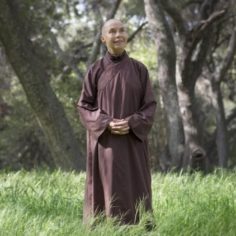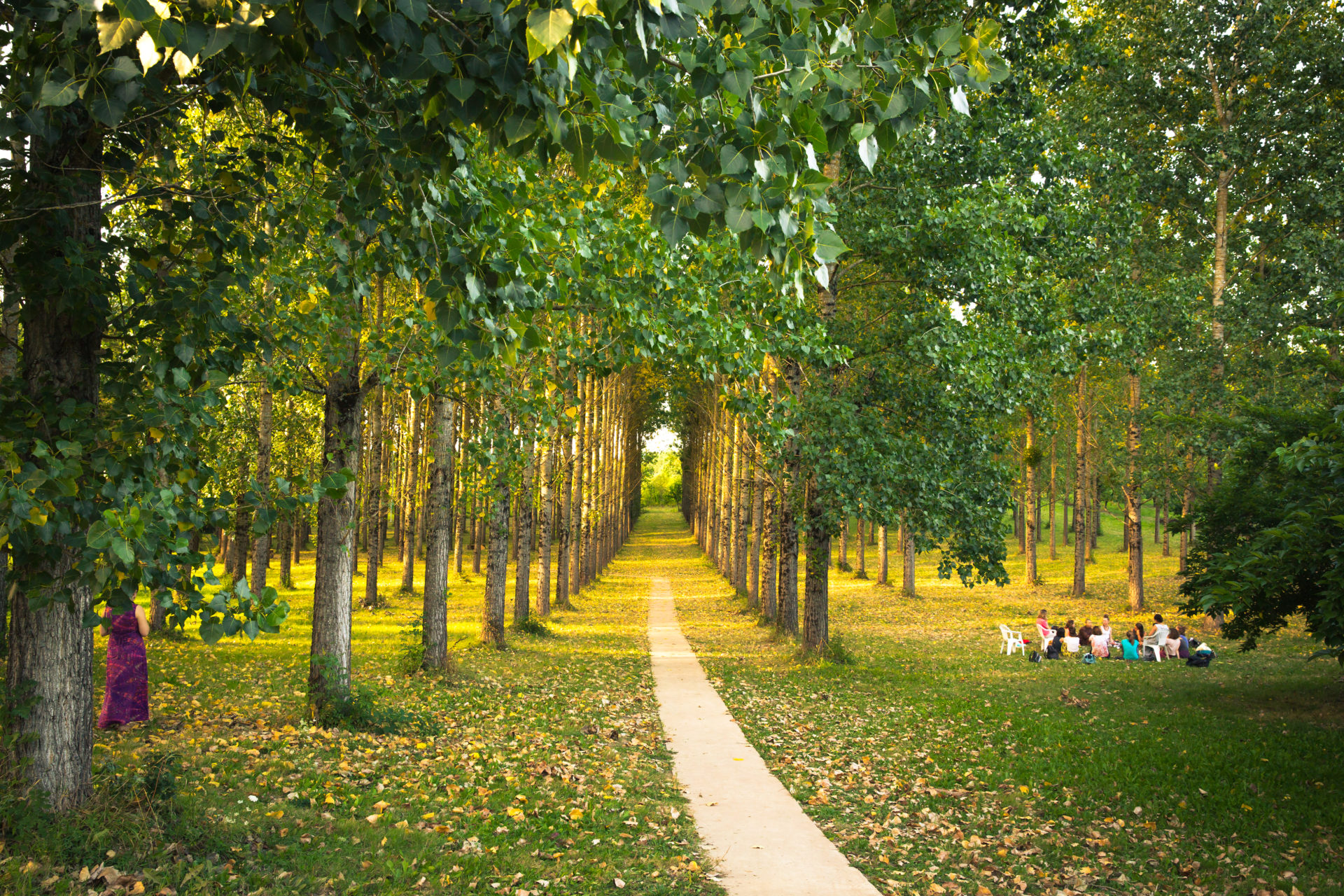By Sister Jina van Hengel in February 2018
Lower Hamlet, Plum Village
June 1, 2017
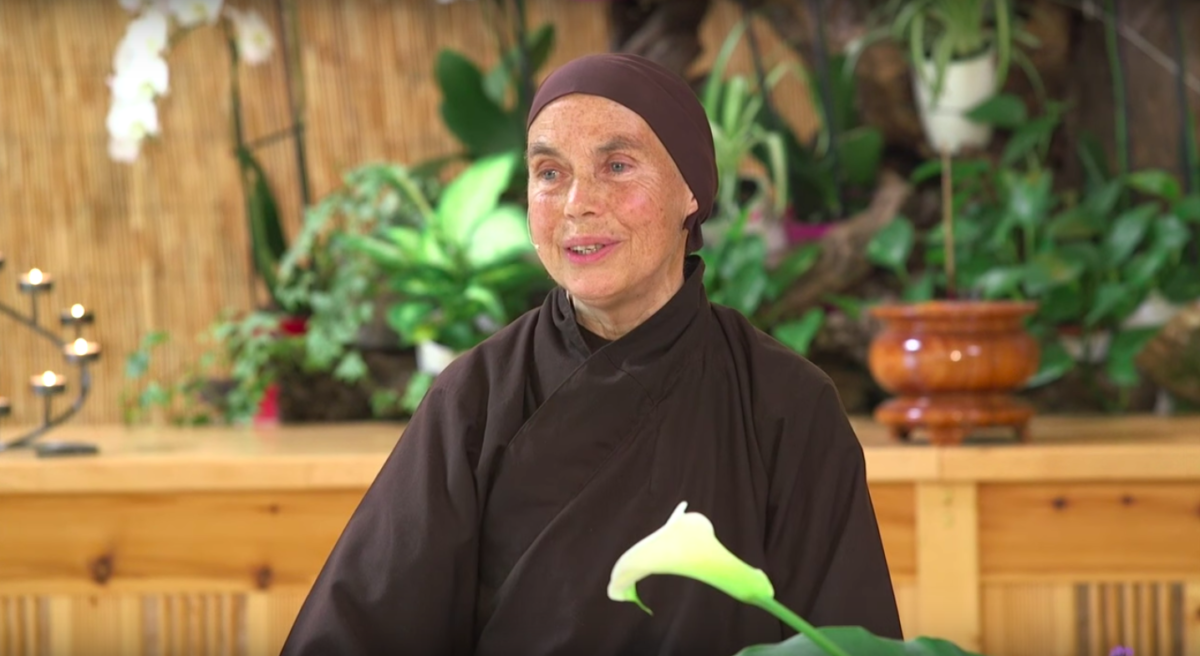
This is the first day of our Mindful and Compassionate Leadership Retreat for Business People. We all have come here because we want to understand or learn something about how to become a mindful and compassionate leader. Maybe this can be best expressed in the question: “Who is the boss?” I mean the real boss.
By Sister Jina van Hengel in February 2018
Lower Hamlet, Plum Village
June 1, 2017

This is the first day of our Mindful and Compassionate Leadership Retreat for Business People. We all have come here because we want to understand or learn something about how to become a mindful and compassionate leader. Maybe this can be best expressed in the question: “Who is the boss?” I mean the real boss. Who is the real boss in our life? Where is our boss leading us? In what direction? Are we happy with that direction or would we prefer to go in a different direction? Last but not least: Do we have a say in this? During this retreat we will look into these questions. We will get to know our boss and learn how to take good care of our boss. If our boss is happy, compassionate, patient and kind, then everyone around us will be happy, compassionate, patient, and kind as well.
Some of you may go to an office every day, and others may work from home. Plum Village is a very big enterprise, and you may want to know: who is the boss? Who is the real boss? People come here and ask: “How do you do it?” Every year we receive thousands of people during our big retreats as well as people who come to practice with us outside of our big retreats. Every Day of Mindfulness, we may be with 450 people of which about 200 are monastics. As residents, we are the employees leading retreats for 400 to 800 people on a regular basis throughout the year. How are we able to do this, again and again, year in, year out? The retreats continue to grow bigger and bigger, and the number of people coming to Plum Village to practice with us is increasing. How do we do it? We work from home! [laughter]. Many people like our home.
COMING BACK TO THE PRESENT
The logo of Plum Village is "Mindfulness, Concentration, and Insight." In the Upper Hamlet, you can see the logo on a stained-glass window at the entrance to the meditation hall. Mindfulness means being present. Sustained mindfulness is concentration, and sustained concentration allows us to look deeply into things in order to understand and come to an insight. We practice the art of mindful living. In our daily life, we generate the energy of mindfulness by our way of sitting, our way of walking, our way of eating, our way of working. Every moment, we are bringing our mind home to our body. Our body is the home of our mind. When we hear the sound of the bell, we bring our mind home to our body to be truly present, and being truly present means being mindful. Coming back to the present moment, bringing our mind home to our body again and again.
When we bring our mind home to our body, we are truly present and we have one moment of calm, one moment of peace, one moment of clarity. Every time we take a step mindfully, we have one moment of calm, one moment of peace, one moment of true presence.
Nowadays, we receive a lot of information; we speak of information overload. Many years ago, when the laptop first came out, I saw an ad in a magazine with a business person standing on a beach and holding a laptop. The ad said, “Now we are available and reachable any moment, anywhere!” I thought, “Oh no, where are we going? No more respite, no more peace?” Now we need to be available and reachable any moment, anywhere. Emergency medical doctors need to be available every minute, so they carry a pager (beeper). But do we still know what is an emergency and what is not? Do we need to text right now this particular information at this particular moment to this particular person? By doing this, we contribute to the idea that we all need to be available any moment, anywhere, anytime. We contribute to robbing ourselves of freedom and possibly contribute to the loss of freedom of the person receiving our messages.
Our practice is to come back to ourselves, to be truly present, to do what we do in freedom and enjoy it. What is robbing us of our freedom? Our mind absorbs everything, and whatever comes in through our senses—mostly through our eyes, our ears, and our thinking—waters seeds in the depth of our consciousness. A seed is a potential in us. We have the potential to be happy, we have the potential to be free, we have the potential to be inclusive, to be understanding, to be compassionate. We also have the potential to be irritated, to be angry and impatient, to be discriminative and exclusive. What goes in will determine what comes out. If we are not happy with what comes out of us, then we have to be aware of what goes into us.
A seed is watered through the contact between an object and our sense organs including our mind. Contact is one of the Five Universal Mental Formations. When one Universal Mental Formations is present, the other four are also present. The Five Universal Mental Formations—contact, mental attention, feeling, perception, and volition—are always together and are present in every Mental Formation that manifest itself. When we look around us, we are in contact with many objects and then our attention is drawn to one of the objects. The objects of our attention water seeds in us.
Looking out of the window I am in contact with many things: trees, cars, a house, a bicycle, the sky, and the grass. What is my attention drawn to? When it is the cars I may think: “Oh, pollution. Why didn't they come by train? We could have picked them up with the van from the station.” What kind of seed does this way of thinking water in me? A little annoyance? I have the capacity to be annoyed. By focusing on the cars and thinking like that, I water the seed of annoyance in me and thereby making it a little stronger. However, I could also look at the trees. They look so beautiful with the ripening cherries. A gift of the Earth. The tree doesn't ask for anything. It just offers its fruit and that waters the seed of gratitude in me. With gratitude present in us, we are better equipped to look into and take care of our suffering. The seeds that are watered more through our sense organs become stronger, and have a chance to come up and manifest themselves as a mental formation most often. They become habit energies, the inclination of our mind, which can be either positive or negative. Do we see possibilities or obstacles?
OBSERVING OUR MINDS
It is very interesting to observe our mind. What is our first thought when we wake up in the morning? “Woo-hoo, another day!” Or “Oh, not another day!” What is the first thought we have when we meet a loved one? “Ah, here comes my love.” We feel happy to have them in our lives. Or if we have a little conflict we may think, “Oh no.” What is the first thought when we step into the office? What is our first thought when we meet a colleague? It may depend on the relationship we have with the colleague. If it’s good, we’ll be happy. If it’s not so good, we may be irritated. “Oh, here comes the one who always creates difficulties in a meeting. No matter what we propose, it always is ‘Yes, but…’” The inclination of our mind is impermanent, just like everything else. What is the current inclination of our mind?
What are our habit energies of thinking, speaking, and acting? Our habit energies stem from the inclination of our mind. What are the neural pathways we have trotted along, again and again? What are our neural pathways? Do we have a say in creating them? That is what we would like to look into at this retreat.
There is contact between our sense organs and various objects. Our mental attention is drawn to one of the objects, and this gives rise to a feeling. A feeling can be pleasant, unpleasant, or neutral. What we are feeling gives rise to a perception of the object of our attention, and volition is the impulse to act, to accept, or to reject based on the nature of our feeling and perception of the object. This happens all the time in all of us, and it is this process that brings about the inclination of our mind.
Let us practice being in contact. Right now we are in contact with many sounds: there is a little bit of rustling, there is the sound of the loud speaker, and there will be a sound of the bell. Let us choose the sound of the bell. Paying attention to the sound of the bell and bringing our mind home to our body. Enjoying the sound of the bell and coming home to this moment. [Bell sounds].
APPROPRIATE ATTENTION
Mental attention can be of two kinds: appropriate attention (yoniso manaskara) or inappropriate attention (ayoniso manaskara). What is the difference between appropriate attention and inappropriate attention? Appropriate attention is choosing an object of attention that leads to well-being: our own well-being, the well-being of others, the well-being of society, the world, and the well-being of Mother Earth. Inappropriate attention is paying attention to an object that leads to the ill-being of ourselves and others, our beloved ones, our colleagues, society, the world, our environment, and our planet.
Since we need trees to survive, paying attention to a tree leads to "Yes, this is wonderful," which leads to "I want to take care of the tree, of the environment," which leads to well-being for the individual, society, and planet. This is appropriate attention. How about a car? Many cars create a lot of pollution. Would paying attention to cars be considered “inappropriate attention”? What makes attention appropriate is not only the object of our attention but also how we look at the object of our attention. I can look at the car and say, “Vehicles have saved many lives.” Cars, ambulances, fire brigades have saved many lives, and I can see the goodness of a car. A car is a car because of many causes, and conditions that have come together. Everything is what it is, and everybody is what they are because of many causes and conditions.
This is a very important teaching of the Buddha. Let us think of a politician. Thinking of some politicians may make us very happy, and thinking of some other politicians may make us not so happy. So should we not bring our attention to a politician who doesn’t make us happy because it waters seeds of fear, anger, discrimination in us? Or can we learn to look deeply at a politician, or anybody in our life we have difficulties with, in a way that helps us to see clearly they are the way they are because of many causes and conditions? The circumstances of their birth, their environment, and the seeds they already had in their store consciousness passed on to them by their ancestors and so on.
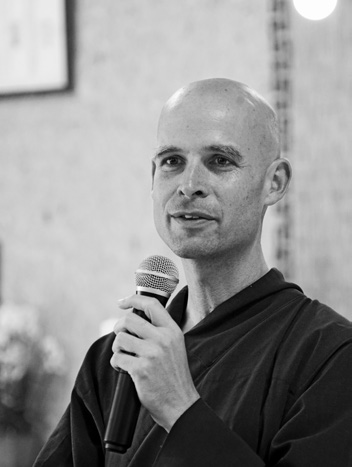
We all have the same seeds, but each one of us has a different strength of a particular seed. We all have the seed of anger; we all have the seed of discrimination, of inclusiveness, happiness, greed, and generosity. But some of the seeds are stronger in us than in others, and that is because of causes and conditions. When we see this, we will understand that someone who causes harm needs our help. We do our best to find ways to help them; however, this does not mean we condone their actions.
So whether attention is appropriate or inappropriate depends on two aspects. The object of our attention and how we look into the object.
Right now let us give our attention to the sound of the bell and come home to ourselves. To pay attention only to the sound of the bell and have one moment of peace, one moment of calm and clarity. Putting everything else aside to enjoy the sound of the bell. [Bell sounds].
FIVE WAYS OF PUTTING AN END TO ANGER
During this retreat we will listen to the sutra on the Five Ways of Putting an End to Anger. In this sutra, the Buddha gives concrete instructions on how to put an end to anger, which is a teaching on appropriate attention, yoniso manaskara.
Here are the five methods the sutra teaches. First, if someone’s bodily actions are not kind, but their words are kind, we should not pay attention to their bodily actions, but pay attention to their words. We choose paying attention to the words and we will not be angry because we see a larger picture of this person, not just their physical action. When we do this, we are watering the seeds of acceptance and inclusivity. We are nourishing our well-being.
Second, what if somebody’s words are not kind? Well, if their bodily actions are kind, you pay attention to their bodily actions and not to their words. This is how we put an end to anger.
Third, if somebody’s bodily actions and words are not kind, what then? This means we need a bit more mindfulness, a bit more concentration, and a deeper insight. When we look closer, we may discover a little bit of kindness in their heart, and then we pay attention to that kindness.
We need to be really present and first look deeply into ourselves because sometimes, we speak harshly to ourselves, we get angry with ourselves, and then with our loved ones, our colleagues, our employees, our society, and the world at large.
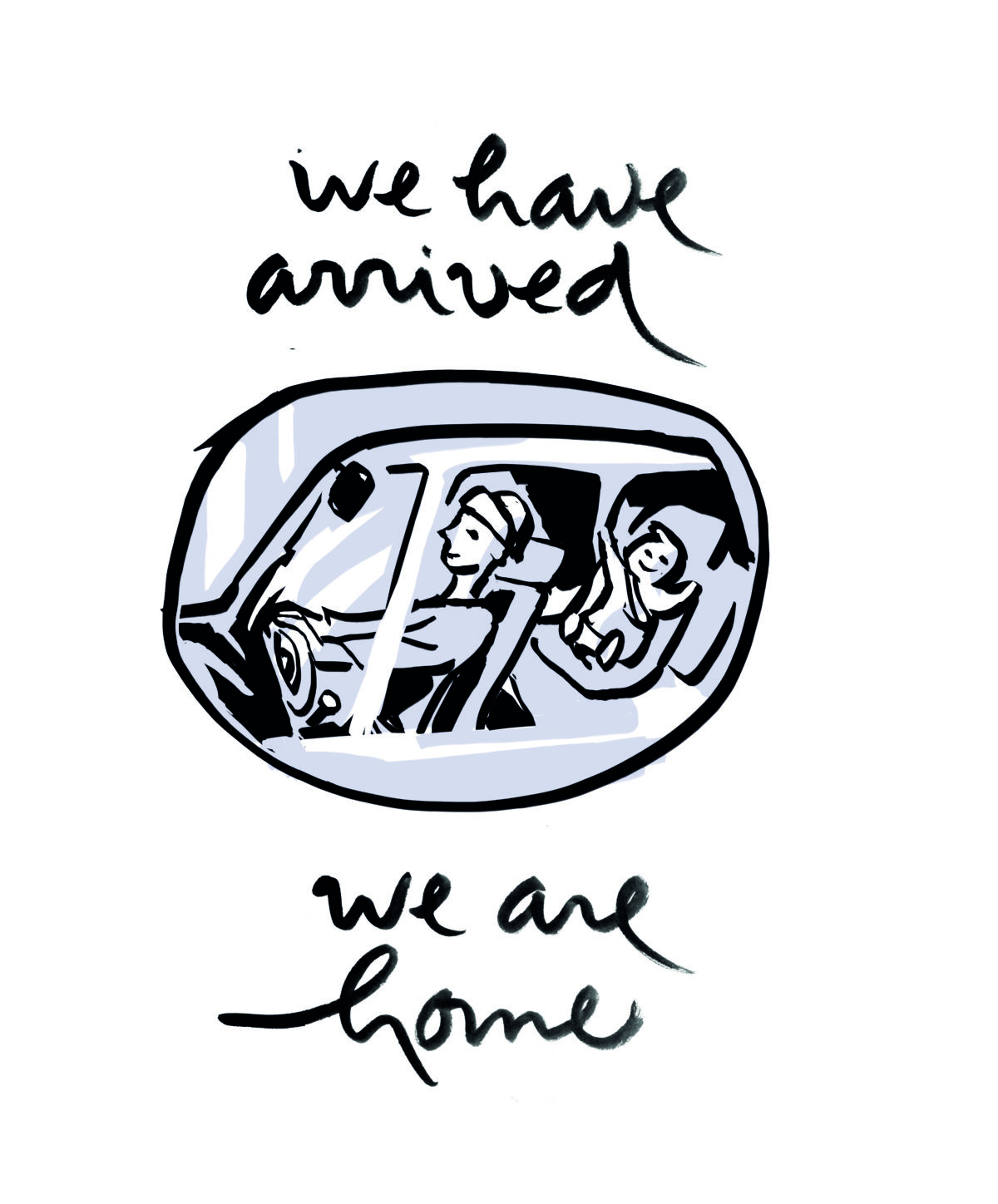
Fourth, if someone whose words and bodily actions are not kind, and in whose heart we cannot discover anything we can call kindness, then what? Well, then it means that person is undergoing great suffering. Somebody who is happy has kindness in their heart, in their speech, and in their actions. So this person cannot possibly be happy, and we might be the person to help and take care of them.
I have a friend who works in an office, and her boss is someone whose bodily actions and words are not very kind. The employees have difficulty discovering kindness in this boss. My friend decided to be present for her boss and listen. Her boss continued not to be kind, but one day her boss said to her: “Thank you. I think you’re the only person here who understands me.” They had a good relationship in spite of the anger that would come up in the boss from time to time because she was able to help and not be carried away by the unkind actions, the unkind words, and the hardness of heart. She helped to bring some softness. Maybe her boss felt loved and appreciated for the first time. Who knows? So if we are able to open our heart and give rise to love and compassion, we will be able to put an end to our anger and really help the other person.
The sound of the bell helps us to come back to ourselves, to take care of ourselves, to become aware of our mental attention, to see whether it is appropriate or inappropriate. Our mental attention determines the inclination of our mind. By listening to the sound of the bell, bringing our mind home to our body, and taking care of what we find in ourselves––with our mindful breathing, holding, looking deeply, coming to insight––we are creating an inclination of mind that is loving, compassionate, understanding, insightful.
Those are the first four ways of putting an end to anger, and there is a fifth way. If there is somebody whose bodily actions are kind, whose words are kind, whose mind is also kind but still we are angry, what do we do? Maybe we are jealous and out of this jealousy, anger arises. “Why does this person get this, and I don’t? Why are they successful and I’m not?” If we are angry with a person like that, then we are not wise. We should not be carried away by the jealousy that is touched in us. Instead, we should focus on all the kindness that is there, and bathe ourselves in this kindness, be nourished by it. Then we are called wise and our own kindness, our well-being will be nourished also.
We need to generate the energy of mindfulness in order to be able to be truly present and take care of our anger in the way the Buddha taught. In Plum Village we have arranged our life in a way that makes it easy to come back to ourselves and practice appropriate attention.
GATHAS HELP US STAY PRESENT
Here in the Lower Hamlet, wherever you go you see signs with little poems that describe the present moment and help us to be present.
Brushing my teeth and rinsing my mouth
I vow to speak purely and lovingly.
When my mouth is fragrant with right speech
A flower blooms in the garden of my heart.
This gatha reminds us to be aware of what comes out of our mouth and which seeds it waters in the depth of our consciousness.
Another gatha:
Before I start the car, I know where I am going
The car and I are one.
If the car goes fast, I go fast.
Before I use the car I ask, “Do I need to use the car?” Before I start the car, I am aware of where I plan to go. I am aware that the car and all the passengers in the car are one, and if the car goes fast, all of us go fast. This gatha brings us to the present moment. When we drive, we are aware of how we are driving. We pay attention to what is happening around us. Other cars may be going faster than is advised and may cut us off. We know that person must be in a hurry; maybe they are on the way to the hospital. With our mental attention, we are either watering a seed of anger or watering a seed of understanding, compassion, and space.
These gathas help us to practice appropriate attention throughout the day.
The mind can go in a thousand directions
But on this lovely path I walk in peace.
With each step, a gentle wind blows.
With each step, a flower blooms.
Walking meditation is an important Dharma door in Plum Village. Our teacher, Thầy, tells us that if we do not practice walking meditation in Plum Village, we cannot say we were in Plum Village. We can say we were in Loubès-Bernac, but we cannot say we were in Plum Village. Whenever we take a step, we enjoy taking a step. We practice walking meditation because we enjoy it, and we find freedom. Aware of every step, we are no longer carried away by non-stop thinking. At first we may be able to do this for one step, two steps, maybe three. Then ten, twenty, thirty, forty steps and with continued practice we find freedom, peace, calm, and clarity with every step.
As the essence of Plum Village practice is walking meditation, you can take Plum Village home with you. When you walk to your car, when you walk to the bus or the train, wherever you are going, you can be in Plum Village in the present moment, in the here and the now.
Once a day we shall practice walking meditation together, generating the energy of mindfulness, of being truly present in the here and the now, the energy of joy, peace, freedom, and healing. One moment of stopping, the non-stop thinking radio channel is one moment of freedom and healing. We have a song we like to sing:
I have arrived, I am home
In the here and in the now
I am solid, I am free
In the ultimate I dwell.
I have arrived in the here and in the now, that is our true address. That is where our true home is. Taking steps in freedom, there is no way to freedom. Freedom is the way.
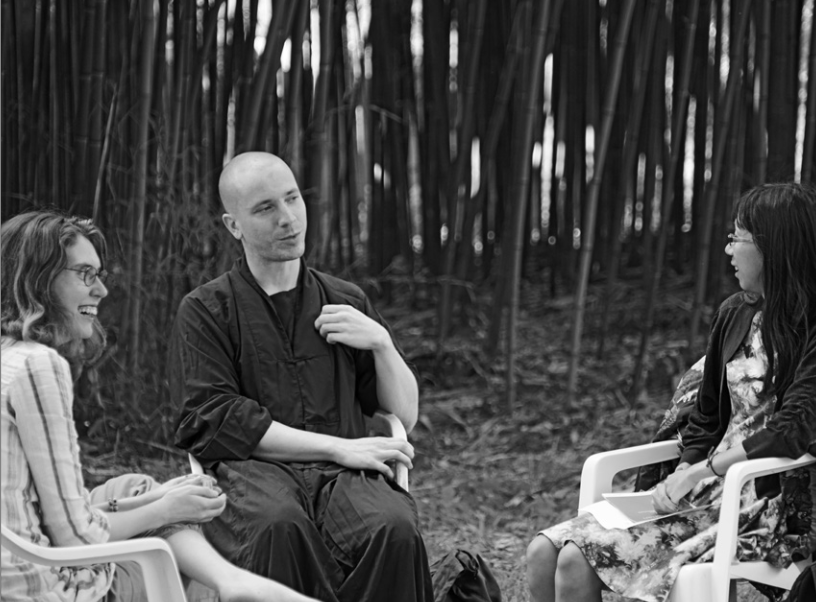
TOUCHING THE PAST, CREATING THE FUTURE
When we look deeply into the present moment, we can see the past and we can touch it. Today we spend time together in the Lower Hamlet, practicing walking meditation, mindful eating, working, sharing. Tomorrow, today will be our past. Actually, this morning is the past already; five minutes ago is already our past. The way we live the present moment is the way our past will be. This week we are going to create a beautiful past together. Every moment we create our past. The best way to take care of the past is by taking care of the present moment. The way we live our day today grows out of the way we lived yesterday, the day before yesterday, a few weeks and months ago, because what did we do? A few months ago, a week ago, we decided to come to this retreat, something we decided in the present moment that is now the past. All the choices we make today are going to shape our future.
What we pay attention to today waters seeds in our consciousness that will manifest sometime in the future, in our thinking, speaking, and doing. If we want to take care of the future, we can only do so in the present moment. When we need to make a decision concerning the future in our personal life or for our companies, we do so in the present moment. We need to be well established in the present moment to have appropriate attention, to make the choice that gives us the future we are hoping to live when it becomes the present moment.
“I have arrived, I am home” is to come back to the here and the now, and by doing so we take care of the present, the past, and the future.
We have another song called “Breathing in, Breathing out.” For those of you who are not familiar with our practice songs, you may think they are a bit silly. But let us look into what these songs tell us? Breathing in, breathing out, I am blooming as a flower. When I first heard this song I thought, “Oh, it’s obviously a child’s song. Children must have made this song.” However, when we pay attention to the sound of the bell, and we know how to let go of all of our anxieties, worries, concerns, hopes, wishes and dreams, we are free. We don’t need to be anything but what we are. A flower is not trying to be a flower, let alone a particular flower. It’s just being itself, according to causes and conditions. Why is it blooming? Because it is the nature of a flower to bloom. It doesn’t start coming out of the Earth because it wants to be a full-bloomed flower. It comes out of the Earth because conditions are sufficient to do so at that moment. The flower is totally aimless in its being, and thereby it’s the most beautiful it can be.
AIMLESSNESS, BUSI-LESS-NESS
Aimlessness doesn’t mean we are just roaming or floating about like a boat on the ocean without a rudder, being thrown hither and thither. No, we bring our mind home to our body. We are fully present with what we are doing for the sheer joy of doing it. When we are fully present while doing something, it is joyful, it is nourishing. We are our most beautiful self. We’ll have a result. We may even say, “I want to go in this direction.” But while we are doing it, we are not lost in “I want to get there, I want to get there, I want to get there.” With that kind of state of mind, we are not truly in the present moment; we are trying to be in the future, which is not possible. The only moment we can be in is the present moment. To be present, to practice aimlessness is being our most beautiful self.
This is a retreat for business people. We in Plum Village are also business people. We are aware that it is very easy to be busi-ness. The word already says it. I am a busi-ness person. When we practice aimlessness, we become busi-less people. Isn’t that wonderful? In Plum Village we have organized our environment and our daily life in a way that helps us be busi-less people, to practice aimlessness, to be truly present.
We can get very busy because we want to be number one. Maybe number one in our corporation, number one as a corporation, number one in life. There is nothing wrong with being number one; somebody has to be number one. There was a nine-year-old child who came home from school. They had had some kind of competition in sports, and the child said, “Mommy, Mommy! I won as the very last one!” What a great insight for a young child like that: “I won as the very last one.” The joy! Obviously that child had done whatever they did with great joy. You can win as the first, the second, the third, the fourth, or the last one. That nine-year old child chose to be happy, and that child is in us. Every one of us has a nine-year old child in us.
Do we want to be number one or do we want to be happy? If we want to be number one, we may be a busi-ness person; if we want to be happy, we may be a busi-less person and still achieve a lot.
I want to go back to yoniso manaskara, appropriate attention. Appropriate attention depends on the object of our attention (what) and the way we look into that object (how). The practice of appropriate attention is very important.
Mental attention is present when there is contact between a sense organ and an object. It is mindfulness that gives us a say into whether that attention is appropriate or inappropriate. We practice in a way that generates the energy of mindfulness so that we become inhabited by it, then we will have appropriate attention with whatever we do. Or if it is inappropriate attention, we will become aware of it and we will know how to turn it into appropriate attention.
So who’s the real boss? With the practice of mindfulness we can take care of our mental attention. Then the seeds of understanding, compassion, inclusiveness, and happiness will grow stronger, and those strong seeds become the inclination of our mind. Through the practice of mindfulness and appropriate attention, we create a wholesome inclination of the mind. The practice of mindfulness gives us a choice.
We may or may not work from home, but we can all live from home, bringing our mind home to our body and being established in the present moment, the only moment we have.
Before lunch we will practice walking meditation together. We will enjoy every step we make. Walking on this beautiful planet, allowing gratitude to arise, the healing energy of gratitude for all that Mother Earth gives us. Gratitude for all of us here giving each other support in our practice. Gratitude for our loved ones at home without whom our life would be very different. Gratitude for our colleagues, employees, employers. We will generate mindfulness and be inhabited by the energy of mindfulness. We will be able to listen deeply, to understand the people in our life whom we consider difficult but who may need our help. Walking in freedom, in peace, we heal ourselves. Then we can offer that peace, that freedom, and that healing to others.
Let us enjoy this retreat together. We will hear a lot more about how to take care of ourselves so we can take care of others. We can become a busi-less business person.
I wish you all a happy retreat. Thank you all for listening.
Transcribed by Adam Victorino and Greg Sever. Edited by Barbara Casey.
